Understanding the Charm of Luxury Engagement Rings
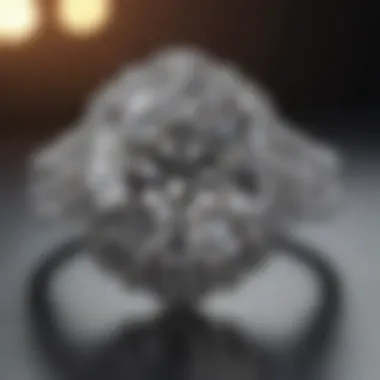
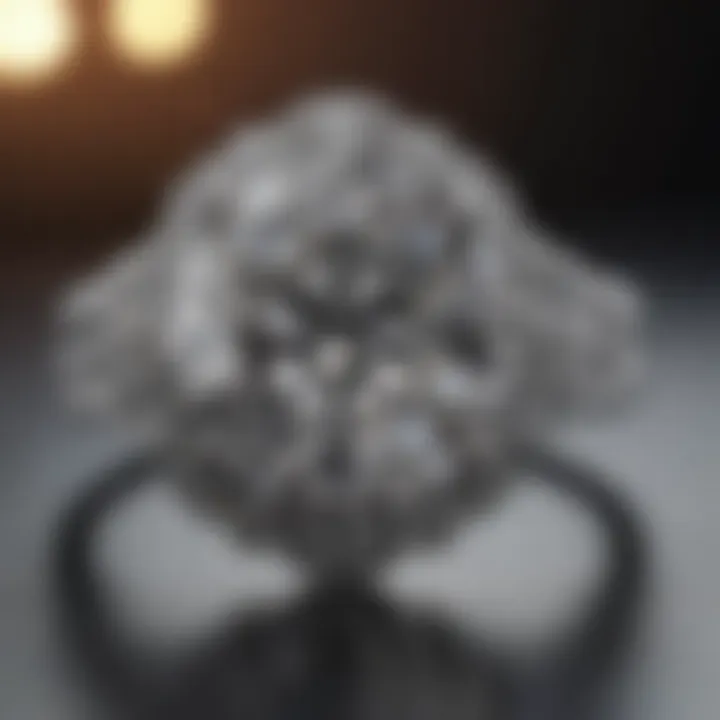
Intro
Gemstone Overview
Definition and Origins
At the heart of any grand engagement ring is the gemstone. A gemstone, in its simplest terms, is a piece of mineral crystal that, when cut and polished, is deemed suitable for use in jewelry. Over centuries, certain stones have captured the fancy of jewelers and enthusiasts alike. Historically, diamonds reigned supreme, often referred to as the 'king of gems.' Each gemstone, from rubies to sapphires, comes with its own unique story and heritage, giving potential buyers not just a piece of jewelry, but also a fragment of history packed with significance.
Historical Significance
The significance of gemstones goes beyond their physical beauty. For example, ancient civilizations adorned themselves with jewelry that displayed their wealth, status, and even their devotion. The tradition of diamond engagement rings appears to have been solidified in the 15th century when Archduke Maximilian of Austria gifted a diamond ring to Mary of Burgundy. This event marked a pivotal moment that set the stage for diamonds as the standard engagement stone. Since then, various cultures have embraced different stones for their meanings.
"A gemstone is not just a pretty face; it carries legacies, traditions, and emotions attached to it from generation to generation."
Gemstone Properties
Hardness and Durability
When considering very expensive engagement rings, one must ponder the durability of the chosen gemstone. The Mohs scale rates the hardness of minerals, where diamonds proudly stand at the top with a rating of 10. This hardness implies not just a resistance to scratching but also ensures longevity—important for a piece of jewelry that symbolizes eternal commitment. Other gemstones, such as sapphires and rubies, come in at a respectable 9. Understanding these properties helps buyers choose a ring that is not only beautiful but also practical for daily wear.
Color and Clarity
Color and clarity are equally significant aspects that can bump up the price of a ring. A stone's color intensity and purity can make a staggering difference in price point. For instance, a vivid blue sapphire can fetch a higher price than a paler version of the same gem. Clarity is about the internal purity of the gem; it deals with inclusions and blemishes that affect its brilliance. High clarity stones are rarer and thus tend to command premium pricing. It’s a balance of color, clarity, and other distinctive traits that contribute to the ring’s overall aesthetic and its market value.
Overall, for those diving into the world of luxury engagement rings, these insights about gemstones lay the groundwork for understanding the layered meanings and crafts behind each piece, reflecting the commitment made not just through words, but through meticulously crafted jewelry.
Understanding Engagement Rings
Engagement rings are far more than simple pieces of jewelry; they are woven into the fabric of our romantic traditions and carry a wealth of significance. The process of choosing an engagement ring can evoke a range of emotions, making it a pivotal moment in many relationships. For a buyer, understanding engagement rings can influence not only the choice of ring but also the intention and the message it conveys.
Why is Understanding Important?
Understanding rings requires a dive into their historical roots, cultural implications, and the various styles that emerged over time. The ring symbolizes a promise, often representing love, commitment, and hope for the future.
When people embark on the journey of purchasing an engagement ring, they often consider several specific elements:
- The choice of materials: This involves selecting the right metal and gemstones, each carrying its connotations.
- Craftsmanship: The skill involved in crafting the ring can affect its overall quality, aesthetics, and durability.
- Market trends: Keeping an eye on what’s in vogue can help buyers make informed decisions by choosing rings that appeal to current aesthetic preferences.
- Personal value: An engaged couple might look to blend individual tastes with symbolism when selecting their ring.
Buying an engagement ring is a significant financial investment. By grasping the intricacies underlying this purchase, buyers can navigate the landscape more confidently.
Historical Context
Engagement rings have a rich tapestry woven through various cultures and eras. The concept of a ring representing a promise dates back thousands of years. Ancient Egyptians, for instance, believed that the circular shape symbolized eternity. They crafted rings from materials such as braided reeds or leather.
In Roman times, men gave their fiancées rings made of iron, exhibiting a practical approach to symbolizing commitment. These rings marked the beginning of legally binding arrangements between couples. As the years rolled on, jewelry became more adorned; gold and gemstones marked the opulence of the rings, inviting a wider spectrum of social status to be expressed through these items.
By the 19th century, the diamond engagement ring as we know it emerged, largely popularized by the De Beers marketing campaign in the mid-20th century. The phrase "a diamond is forever" successfully entrenched the notion that diamonds are the ultimate choice for engagements, setting a standard that is hard to shake even today.
Cultural Significance
Engagement rings carry diverse meanings across cultures, often reflecting deep-seated values and traditions. In many Western cultures, the diamond engagement ring is an iconic symbol of love and aspiration. However, this isn't universal.
For example, in some Indian cultures, the concept of engagement is represented through various types of adornments, including intricate gold jewelry that signifies wealth and family ties, alongside the act of tying the ‘mangalsutra’, which symbolizes marriage.
Moreover, rings may also carry symbolic meanings beyond mere adornment. The recipient may interpret a ring not just as an accessory but as a cohesive part of their relationship narrative. Cultural elements shape preferences, whether it’s the choice of gemstone, the style of the ring, or the ceremonies surrounding the engagement.
“An engagement ring is a story in itself; an emblem of two individuals coming together.”
The social implications of an engagement ring cannot be overstated. They not only represent a couple's individual choices and relationships but also align with broader societal expectations that dictate how one should mark significant life events. Ultimately, understanding the historical and cultural foundations behind engagement rings enhances appreciation for their profound allure.
Defining Very Expensive Engagement Rings
Understanding what qualifies as a very expensive engagement ring can be a bit like navigating through a densely packed maze—there's a lot to consider, and each turn reveals something new. This section is not merely about slapping a price tag on a piece of jewelry; it's about grasping the nuances that elevate these rings to the upper echelons of luxury.
Current Market Trends
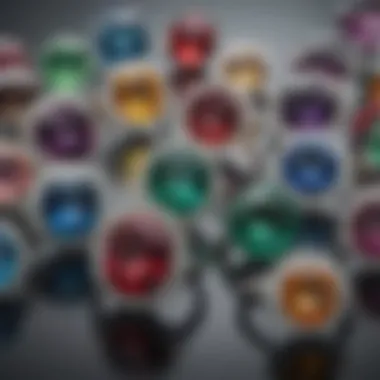
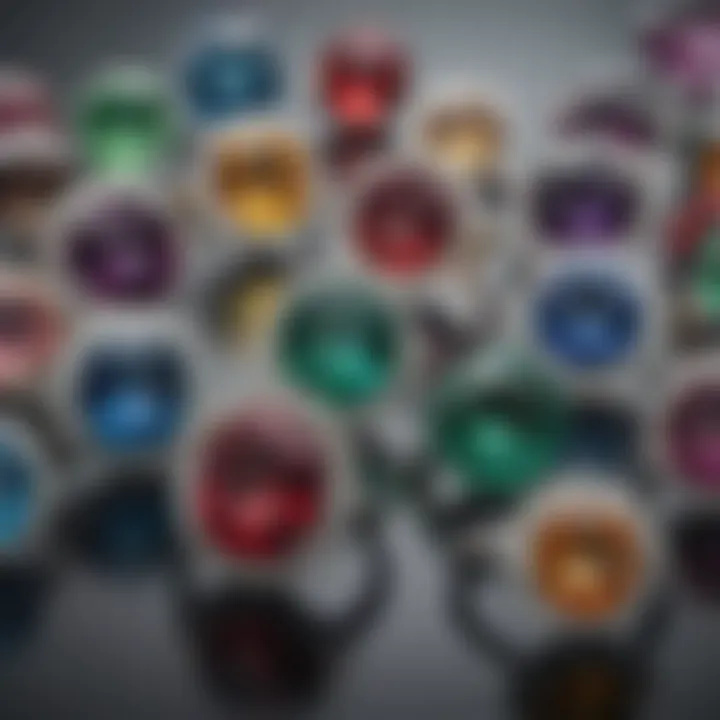
In the fast-paced world of luxury goods, engagement rings have carved out their own niche. The trends often reflect broader economic shifts as well as changing consumer values. Currently, consumers are leaning toward more unique and personalized options. Rather than opting for the classic solitaire, many couples are now turning to distinctive designs that involve colored stones or mixed metals.
Some notable trends include:
- Sustainable Practices: With a greater focus on environmental responsibility, lab-grown diamonds are gaining traction. They offer ethical alternatives without losing the dazzling appeal.
- Vintage Revivals: Nostalgia plays a significant role. Rings designed with vintage styles incorporate intricate details, inspired by designs from as far back as the Victorian era.
- Customization: Personalization is on the rise. Couples are seeking personalized designs, often collaborating with jewelers to create pieces that reflect their story and character.
Moreover, the rise of social media platforms like Instagram has influenced how people perceive luxury. High-profile influencers often showcase unique engagement rings, creating a ripple effect that can propel certain styles into the spotlight. As trends shift and evolve, keeping an eye on these influences offers insights into what might be popular next.
Price Ranges and Their Implications
When it comes to determining the cost of very expensive engagement rings, the phrase "you get what you pay for" rings true—pun intended. The price can vary dramatically, creating a spectrum that ranges from relatively affordable options to those that could make a person wince at first glance.
Typical Price Ranges Include:
- Mid-Range (Around $2,000 - $10,000): This range usually provides classic diamond solitaires or decent-quality gemstones. These rings can still serve as lasting symbols without breaking the bank.
- High-End (Around $10,000 - $50,000): Here, you might find larger stones or more intricate designs. Often, these rings feature superior craftsmanship and gemstone quality that justifies the higher expenditure.
- Luxury (Above $50,000): These prices no longer just incorporate the cost of raw materials; they reflect the artistry, the brand, and occasionally the 'celebrity factor.' Rings in this bracket often highlight rare gemstones or custom designs made by well-known artisans.
By understanding these price ranges, potential buyers can maneuver through the options available in the market while also comparing the intrinsic value of the ring related to their investment.
"Purchasing a very expensive engagement ring isn't just about the money. It is also an emotional commitment, and understanding its worth can enhance that significance."
Making informed decisions is key. Recognizing the balance between cost, quality, and emotional significance will guide buyers not just to the ring itself, but to the story behind it.
Factors Influencing Price
The price of engagement rings represents a blend of various elements that define their allure. When discussing very expensive rings, understanding what factors contribute to their price becomes paramount. It’s not merely about how much one spends; it's about the intrinsic value attached to every aspect of the ring. From the choice of gemstones to the type of metal used, each piece tells a story that resonates with its wearer and signifies love and commitment. Therefore, when selecting an engagement ring, it’s essential to consider these influential factors carefully, as they greatly impact both the monetary value and the emotional resonance of the jewelry.
Gemstone Selection
Type of Gemstone
The choice of gemstone serves as the heart of any engagement ring. Each gemstone carries its uniqueness and character, contributing significantly to the overall appeal. Diamonds are often the go-to option, widely accepted for their unmatched brilliance and significance representing eternal love. However, there’s a growing trend of alternatives like sapphires, emeralds, and even moissanite gaining traction.
These gemstones add a distinct twist to the traditional engagement ring and typically come with various price ranges that can be lower than that of high-quality diamonds. For example, a rich blue sapphire brings stunning color and is known for its durability.
However, it’s crucial to note that not all stones hold the same emotional weight. While a diamond is often tied directly to commitment, a more exotic choice may require conversations around personal significance and taste.
Quality and Clarity
Quality and clarity of the gemstones significantly shape the overall price. When discussing diamonds, the Four Cs—cut, color, clarity, and carat weight—serve as guiding markers. A ring featuring a diamond with high clarity and quality will naturally command a higher price, giving it greater desirability.
For colored stones, clarity holds a different meaning, focusing more on visual appeal. A vivid color with minimal inclusions usually fetches a premium. Buyers should consider that higher clarity often implies a brigher and more appealing stone. However, some may find eye-clean stones at slightly lower prices, which can still appear stunning in the setting.
Rarity and Source
The rarity and source of gemstones heavily influence their price. Stones that are scarce by nature or ethically sourced tend to draw higher price tags. For instance, the unique allure of a pink diamond, being among the rarest in the world, often results in staggering price points. On the other hand, conflict diamonds raise ethical concerns and affect their value. Buyers today often show preference for stones that carry stories of responsible sourcing.
Some gems like lab-grown diamonds provide a conflict-free option and lower price without compromising quality, gaining popularity among conscientious consumers. Ultimately, understanding the rarity and source not only shapes the cost but also enhances the emotional connection to the ring.
Metal Choices
Gold vs. Platinum
When it comes to metal selections, gold and platinum reign supreme. While gold holds a vibrant, warm hue that many find attractive, platinum impresses with its durability and hypoallergenic properties. A platinum band, without a doubt, makes a bold statement of commitment, further bolstered by its innate rarity compared to gold.
Gold comes in various karats and colors, all of which influence its pricing. For those aiming for a ring that balances beauty and budget, 14k or 18k gold may be favorable. However, platinum rings will often run a steeper price, but for those who prioritize durability and longevity, it becomes worth considering.
Rare Alloys
Rare alloys, such as palladium, offer an intriguing option that stands apart from the more common choices. Not only does this option come with a unique silvery-white appearance, but it is also lightweight and does not tarnish, which many find appealing. While currently less known, incorporating rare alloys in engagement rings can represent a modern and distinct choice, often linked to bespoke design.
However, the drawback lies in availability and potential sourcing issues, which can lead to a higher price. Engaging a jeweler familiar with rare metals may provide insights into making the right choice without breaking the bank.
Ethical Concerns
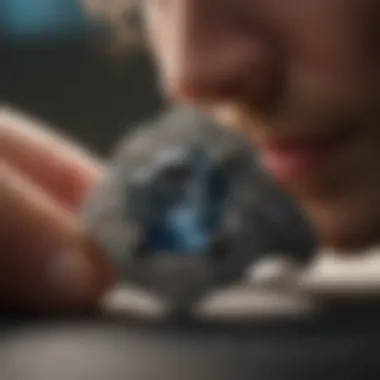
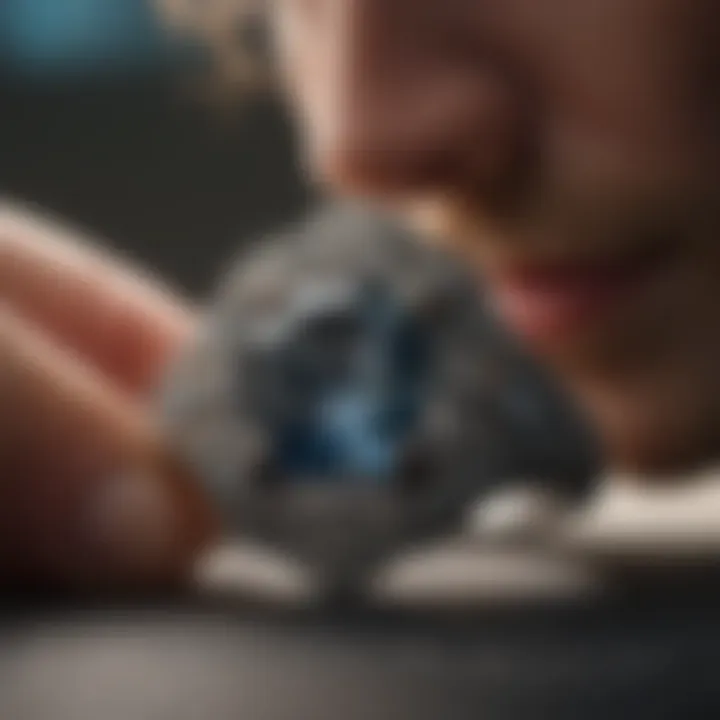
Ethical concerns surrounding the sourcing of gold and metal have gained traction in recent years. Consumers increasingly seek out transparency about how their engagement rings are manufactured. Metals that are certified as ethically sourced carry weight in the purchasing decision, impacting their overall value.
While ethical metals can sometimes carry a premium price, many buyers feel that the extra cost is justified when supporting responsible mining practices. As a result, exploring ethical concerns plays a critical role in shaping the final price of luxury engagement rings while aligning them with personal values.
Craftsmanship and Design
When it comes to very expensive engagement rings, the terms craftsmanship and design are not merely about aesthetics. They encompass a multitude of factors that significantly contribute to the value and allure of such pieces. These attributes reflect the skill of artisans, the uniqueness of the ring, and the emotional resonance it holds for couples.
Artisan Techniques
Handcrafted vs. Machine-Made
The debate between handcrafted and machine-made jewelry can get quite heated among purists and modernists alike. Handcrafted pieces often carry a distinct charm and individuality that factory-produced rings simply cannot replicate. Each ring is a labor of love, crafted by skilled artisans who pour their expertise into every detail. This personal touch makes engaged couples feel a deeper connection to the jewelry they choose.
Contrastingly, machine-made rings can offer precision and consistency, which, for some buyers, is an attractive quality. However, they lack the warmth and character of handmade creations. It's this blend of artistry and care that often sways buyers toward defining their love through a handcrafted item. Ultimately, handcrafted options tend to be regarded as more valuable due to their historical significance and artisanal touch.
Unique Design Elements
When we talk about unique design elements, we delve into how specific features make engagement rings stand out. Whether it's an unconventional shape, a rare setting style, or an artistic fusion of different gemstones, these elements play a pivotal role in creating a piece that tells a story.
These distinct design traits are especially sought after in the luxury market, as they often signify a higher level of craftsmanship and creativity. Couples look for designs that resonate with their shared journey and personal style, therefore enhancing the emotional significance of the ring. While unique elements certainly elevate the aesthetic appeal, they may also come with their share of challenges. For instance, more intricate designs might require heightened maintenance and care to preserve their beauty over time.
Influence of Designers
Renowned Brands
The influence of renowned brands in the engagement ring market cannot be overstated. Brands like Tiffany & Co. or Harry Winston command respect and a certain prestige due to their history, craftsmanship, and quality. Their designs often become trendsetters, influencing what couples aspire to own.
Owning a ring from a recognized luxury brand can also serve as a status symbol, as many individuals view these pieces as investments. However, this brand allure can come at a substantial price point, and potential buyers must weigh the benefits of exclusivity against the practical aspects of their purchase.
Custom Designs
On the flip side, custom designs are becoming increasingly popular as couples seek personal expression in their engagement rings. Opting for a ring designed specifically to symbolize a relationship allows for a level of intimacy and uniqueness that mass-market options fail to deliver.
Custom pieces often showcase a blend of personal stories, ideas, and preferences, weaving together elements from both individuals into a singular piece of art. While they can be more costly depending on the design and materials involved, the emotional value is often seen as priceless by the wearer. This direct connection to the ring's creation process may far outweigh the benefits of buying off the shelf, as couples find themselves more represented by their rings.
"Choosing a ring isn’t just a transaction; it’s a step into a shared future that these pieces come to symbolize."
The craftsmanship and design of engagement rings are critical in shaping their allure. Whether opting for handcrafted nuances or the seamless precision of machine-made pieces, potential buyers face a spectrum of choices that reflect both aesthetic preferences and personal sentiments. As couples navigate these waters, they’ll find that the choices made in this category extend far beyond mere expenditure; they can resonate deeply in the journey of commitment.
Psychology Behind Purchasing
When it comes to buying an engagement ring, the psychological factors at play often run deeper than the glint of the gemstones. Understanding the emotional undercurrents and social ramifications surrounding these purchases can be key to navigating the high-stakes world of luxury engagement rings. The allure of an extravagant ring frequently hinges on personal stories, relationships, and societal expectations, making this topic worth delving into.
Symbolism of the Ring
At its core, an engagement ring is steeped in symbolism. It serves not just as a piece of jewelry; rather, it embodies love, commitment, and intention. Many perceive the ring as a tangible representation of promises made. A sizable diamond or unique gemstone not only enhances its beauty but underscores the seriousness of the commitment being made.
Historically, the tradition of giving an engagement ring has roots in various cultures. In some instances, it was thought to have magical protective qualities. Today, its meaning has evolved, but the significance remains potent. The choice of the stone, its carat weight, and overall design can speak volumes about the sentiments behind the engagement itself. It’s not uncommon for couples to share stories of how a particular ring was selected, with tales of visits to gem shows or family heirlooms that add another layer of meaning to the purchase.
Moreover, the size and style can create a narrative around the couple and their experiences together, giving the ring its own history even before it’s worn. This deep-seated importance makes the engagement ring a more than just luxury item; it becomes a touchstone of significant moments in life.
Influence of Social Status
Social status plays a pivotal role in the realm of very expensive engagement rings. In our image-centric society, a ring can speak volumes about one's social standing. The adage "keeping up with the Joneses" rings particularly true when it comes to luxury purchases. Individuals may feel pressure to showcase their love through extravagant expressions, often leading to decisions driven by societal expectations rather than personal sentiment.
The trend of elaborate, high-cost rings is not just about personal taste—it also reflects a hierarchy of affluence in social circles. For instance, a high-profile engagement ring might become a conversation piece among peers or a subject of admiration on social media platforms like Facebook and Instagram. People often compare their own choices to those of others, which can amplify feelings of inadequacy or provoke a desire to ‘one-up’ friends or acquaintances. In certain circles, the cost of the ring can be interpreted as an indicator of loyalty and commitment, further complicating the emotional landscape.
Closure
In summary, the psychology behind purchasing very expensive engagement rings encompasses much more than simply picking out a piece of jewelry. The rich symbolism associated with engagement rings transforms them into vessels of personal narrative and societal expectation. By exploring why these rings hold such significant weight in the human experience, we uncover layers of meaning that extend well beyond their financial cost.
Current Trends in Luxury Engagement Rings
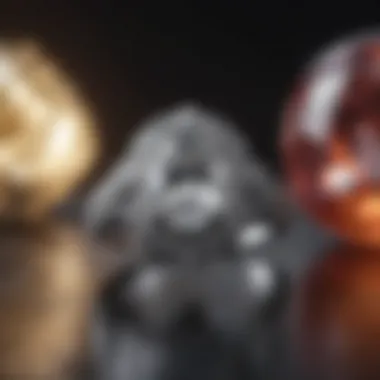
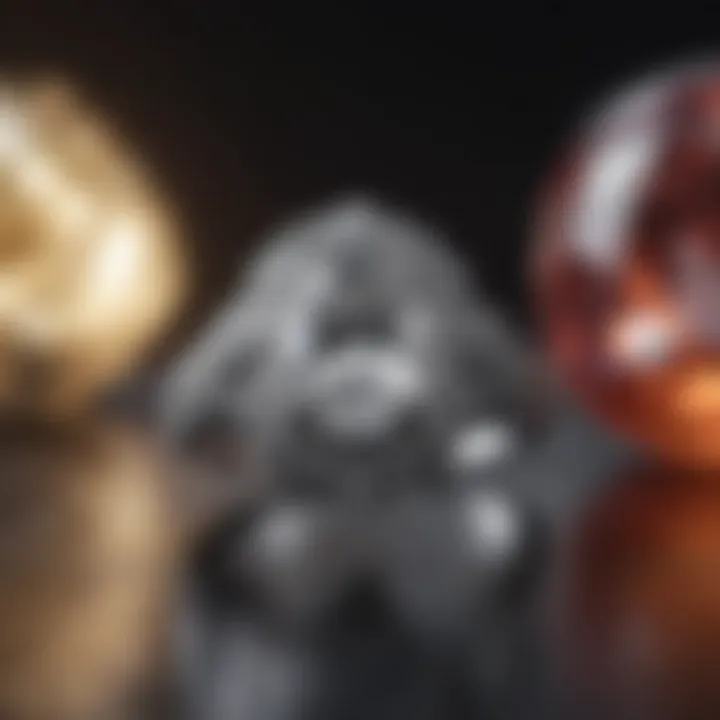
As the world turns, so too do the trends in luxury engagement rings. The realm of high-end jewelry is not static; it ebbs and flows, dictated by shifts in consumer preferences and social values. In this era, prospective buyers are not only thinking about the cost but the symbolism behind their choices. Engagement rings have evolved into vessels of personal expression, reflecting the wearers’ values and aesthetics. Hence, understanding current trends in this marketplace is crucial for those looking to invest wisely.
Emerging Gemstone Alternatives
Lab-Grown Diamonds
Unlike traditional mined diamonds, lab-grown diamonds are manufactured under controlled conditions that replicate the natural diamond formation process. One of their standout characteristics is their identical chemical composition to their natural counterparts. This makes them an appealing choice for buyers who want the sparkle without the ethical concerns tied to mining. Moreover, lab-grown diamonds typically come at a fraction of the price, which allows consumers to either opt for a bigger stone or save some cash for future plans.
The unique feature of lab-grown diamonds lies in their traceability. Each piece can be expertly tracked back to its origin, providing transparency in a market where that was once a rarity. However, buyers do face a double-edged sword situation; while these diamonds are often more affordable, some argue they lack the emotional resonance of a mined diamond, leading to debates on their true value as symbols of commitment.
Colorful Gemstones
Moving beyond the traditional diamonds, colorful gemstones are gaining traction, adding a rich tapestry of choices for couples seeking something different. Think of sapphires, emeralds, and rubies—each offers its own history and cultural significance. One key feature of colorful gemstones is their ability to convey a personal story. For example, sapphires are often considered tokens of wisdom, while emeralds symbolize rebirth.
The advantages of colorful gems are many; they provide an opportunity for the wearer to flaunt their individuality, and they often carry a lower price tag compared to diamonds. Nonetheless, the uniqueness can sometimes come with challenges; certain stones may require more care or may be less durable than diamonds. This adds a layer of consideration for potential buyers who wish to balance aesthetic appeal with longevity.
Sustainable and Ethical Practices
In today’s conscientious climate, sustainable and ethical practices are more than just buzzwords—they're principles shaping the luxury engagement ring market. Consumers are leaning towards brands that practice responsible sourcing, following both environmental and social mindfulness. This incorporates everything from the materials used, like recycled gold, to ensuring fair labor practices in the supply chain.
Brands that adopt sustainable practices are seeing a strong consumer preference, highlighting a collective shift towards valuing integrity as much as luxury. Ethical sourcing not only contributes positively to global issues but also enhances the emotional value of the ring; buyers feel a sense of pride in their choice, knowing it represents their values.
"In this day and age, the story behind a ring can be just as captivating as the ring itself."
As the discussion about sustainability continues, various certifications and standards are emerging, helping guides consumers in making informed decisions. Being aware of these trends aids not just the buyers but also helps industry players innovate and adapt, ensuring the future of luxury engagement rings aligns with the evolving societal expectations.
Future Outlook
Engagement rings possess not just aesthetic appeal but also an emotional relevance that enhances their allure. As we look ahead, several factors like technological advancements and shifting consumer dynamics are shaping the future of this market.
Understanding these elements is vital for anyone interested in very expensive engagement rings. The trends set today will influence future designs, materials, and the overall purchasing behavior of consumers. Jewelry designers, gemstone enthusiasts, and collectors must stay informed to appreciate the evolving landscape properly and make wise choices when investing in these symbolic pieces.
Technological Innovations
Emerging technologies continue to revolutionize how engagement rings are designed, manufactured, and marketed. For instance, advances in CAD (Computer-Aided Design) allow jewelers to create intricate patterns and unique styles that might have been impossible a few years ago. This technology has encouraged a wave of personalization, where couples can collaborate with designers to develop customized pieces that tell their unique story.
Moreover, laser engraving technology enables intricate designs and messages to be embedded into gemstones and metals, creating a deeper symbolic representation. Notably, this approach is increasingly favored among buyers who want their gifts to have a more personalized touch.
Another pivotal innovation is the adoption of 3D printing. This method streamlines the manufacturing process, cutting down costs and time while allowing for complex designs that can cater to the whims of modern consumers. Furthermore, it significantly reduces material waste, aligning jewelry production with growing sustainable practices.
Shifting Consumer Preferences
Today's consumers are not just looking for extravagance; they seek meaning and sustainability. This shift is gradual but marked. A growing number of buyers are leaning towards brands that carry a story, one that reflects their values and lifestyles. This means ethical sourcing and transparency in gemstone procurement have become crucial considerations. Many consumers are asking where their diamonds come from, interested in the environmental and social impacts of their purchases.
In addition, there’s been a notable rise in interest in alternative gemstones. While diamonds have long held the spotlight, more people are exploring sapphires, emeralds, and even moissanite as exquisite choices for engagement rings. These alternatives not only provide a refreshing take on traditional rings but offer prospective buyers more unique options which differ from the mass-produced, generic styles often found in stores.
Furthermore, cultural influences play a significant role in shaping consumer preferences. Global connectivity allows trends to transcend borders, meaning that what’s popular in one culture can swiftly become coveted in another. For example, the recent surge in vintage and antique rings has made waves among modern couples, as the charm and history tied to these pieces bring a unique narrative to their engagements.
Through technological advancements and evolving preferences, the future of very expensive engagement rings is promising. Understanding these dynamics will help all stakeholders navigate this ever-evolving landscape.
Closure
In wrapping up the discussion around very expensive engagement rings, it’s crucial to recognize the layers of richness that these pieces carry beyond their glittering surfaces. They resonate profoundly with emotional attributes, societal narratives, and artistic expressions. The value of an engagement ring cannot merely be chalked up to its price tag; instead, it encompasses a blend of materials, design philosophies, and the interactions these rings forge within personal and cultural landscapes.
Summary of Key Points
- Symbol of Commitment: Engagement rings serve as profound symbols of love and commitment, often dictating the emotional weight they carry for couples.
- Influence of Trends: Current market trends, including emerging gemstones and sustainable practices, shape buyer preferences and influence pricing dynamics.
- Craftsmanship Matters: The level of artistry and craftsmanship plays a pivotal role in determining both the aesthetic appeal and the worth of these rings. Brands with legacy often command higher value due to their established reputations.
- Psychological Factors: The social implications of purchasing such luxury items cannot be underestimated, as they often reflect and reinforce societal status.
- Future Trends: Anticipated technological innovations and evolving consumer tastes indicate that the luxury engagement ring market is poised for continued evolution.
Final Thoughts on Value and Meaning
Engagement rings represent far more than an extravagant piece of jewelry; they narrate a love story that is both intimate and public. The allure of these very expensive rings lies not only in the precious materials or intricate designs but also in the sentiments they evoke. These symbols encapsulate promises made between partners and convey messages of devotion that often transcend generations.
From the sparkle of lab-grown diamonds to the vibrant hues of unique gemstones, each choice reflects personal values and aspirations. Investing in a well-crafted engagement ring becomes an act of melding artistry with authentic emotional significance.
One must ponder not just the monetary implications but also the memories that these rings will hold. After all, it’s the tales behind each stone and setting that truly define their worth in the tapestry of life.
"A ring is not just a circular band, it is a capsule of promises, a storyteller of love that endures through time."
By understanding the factors influencing their allure and significance, potential buyers can make informed decisions that will ensure their chosen piece resonates with both personal meaning and quality.



